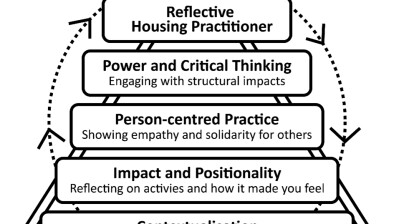Mark O’Neill: Filling the sieve – an analogy for building energy efficiency

Mark O'Neill
Mark O’Neill, head of energy consultancy at Hardies Property & Construction Consultants, likens heating a building to filling a sieve.
I’m partial to a good analogy. In a literary sense, they serve the purpose of allowing a comparison to be drawn between two unrelated concepts to make a clear point or convey an idea. To me, they can be the picture which speaks a thousand words.
My current favourite analogy is one I’d like to credit for but I’m not completely certain I can; it is ‘Heating a building can be like filling a sieve’. If you are left confused by this statement let me explain.
Increasingly, in my role as head of energy consultancy at Hardies, I’m asked for my views and opinions about energy efficiency in buildings. The conversation sooner or later comes around to the question of heat pumps – usually the air source variety. Do they work? Am I in favour of them? Would I recommend one?
What I can say is that I’m not against heat pumps in general. In fact, I do think they have a role to play in reducing energy consumption in buildings but equally they are perhaps not the silver bullet answer which might be suggested from some quarters.
The question of heat pumps always leads me to seek to explain the concepts of building heat loss, indoor temperature maintenance and human thermal comfort. I have to admit, quite often the conversation moves quickly on to other matters.
This reaction got me thinking about a straightforward analogy I can use to make a connection between what people think about building energy efficiency and their conception of the role of heat pumps, and what fundamentals needs to be discussed in regard to building energy efficiency, before looking at investment in heating and cooling systems.
This is where the idea of filling the sieve was conceived. The sieve represents the building, and the water represents heat. How the water in the analogy is delivered to the sieve can be thought of as the tap, and anyone who has gone bathroom shopping will know taps come in a myriad of forms but essentially do the same task – a bit like HVAC systems.
While using energy is not necessarily a bad thing, in fact it is ubiquitous in the occupation of buildings – all buildings use energy. However, it is often said that the cheapest and least polluting unit of energy is the unit of energy you didn’t actually use. This statement continues to stand scrutiny, but for many it is unrealistic, particularly when one is considering the existing building stock across the UK in which we live and work.
If we accept that energy use is inevitable, the key question becomes: what’s the minimum energy needed for my building? The answer to that question will depend on numerous factors but will be underpinned by what purpose is the building put to and what are the demands of its users.
Setting aside operational energy use linked to industrial or manufacturing processes, it has been long established that the heating of buildings is the largest single demand for energy in a building. And all things being equal, one will need the same amount of energy to raise the interior temperature of a building by 13 degree C to 20 degree C, no matter how you create and deliver that heat energy.
One factor which will determine how much energy might be required to maintain that set temperature will be how much heat (energy) is lost through the fabric of the building, and the frequency energy is required to return the temperature of any given space to the desired level. In short how quickly a building loses heat will impact how much energy a building will use.
This is where a ’fabric first’ approach to energy efficiency becomes crucial. By focusing on improving the building’s fabric – such as insulation, windows, and doors – you can significantly reduce heat loss.
Imagine energy as water trying to fill a sieve. The more holes (or leaks) in the building’s fabric, the more energy (or water) you need. Plugging those holes with better insulation means less energy is wasted, just like less water would be lost from a sieve without holes.
In conclusion, the analogy of heating a building to filling a sieve highlights the importance of considering a fabric first approach in reducing heat loss for improved building energy efficiency.
By focusing on improving the building’s fabric, we can significantly cut the energy load demand needed to keep our indoor spaces comfortable, leading to greater efficiency and sustainability. Adopting this approach also avoids the need to over spec the HVAC system or opting for a system that isn’t necessarily appropriate for a particular building.
If you’re interested in making your building more energy-efficient, the Energy Team at Hardies is here to guide and advise. We invite you to engage with us to discuss the energy efficiency of your buildings using a fabric first approach.








